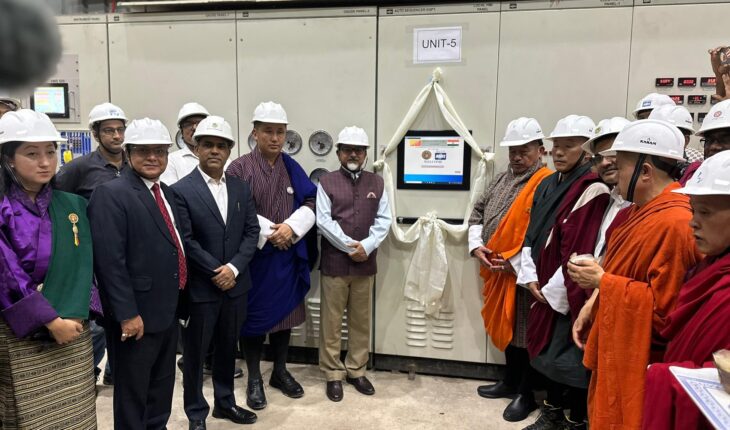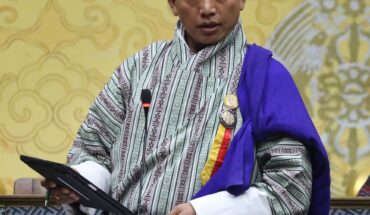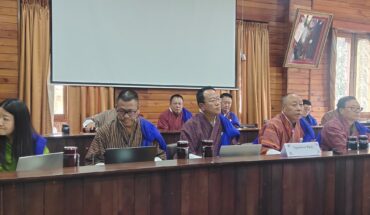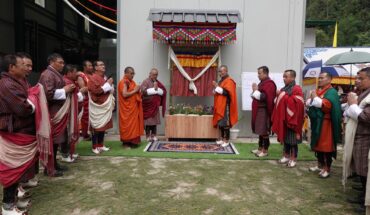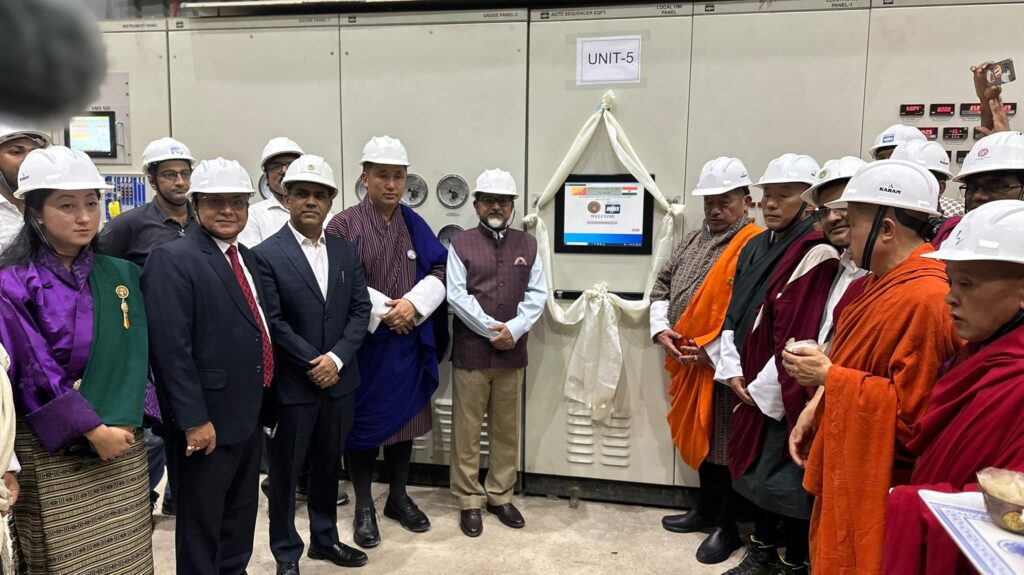
In the steep valleys of Wangdue Phodrang, two of Bhutan’s most ambitious energy undertakings—Punatsangchhu-I and Punatsangchhu-II—embody a tale of contrasting momentum.
Conceived as twin pillars of the Kingdom’s hydropower ambitions, they have come to symbolize the unpredictable terrain—both literal and bureaucratic—on which Bhutan’s development rides.
Punatsangchhu-II, the younger of the two, is now close to crossing the long-awaited finish line. After years of delays, spiralling costs, and supply chain disruptions, the 1020 MW hydroelectric project is steadily surging ahead, bringing much-needed energy optimism to the country.
On 17 July, Unit 5 (170 MW) of Punatsangchhu-II was successfully synchronized with the national grid—marking the fifth of six units to come online.
This milestone follows the synchronization of Units 1 and 2 in December 2024, Unit 3 in March 2025, and Unit 4 in May 2025.
The final Unit 6 is reportedly nearing readiness and is expected to be commissioned by mid to late August 2025.
A formal ceremony was held at the project site to mark the commissioning of Unit 5.
Present at the occasion were Lyonpo Gem Tshering, Minister of Energy and Natural Resources, Indian Ambassador Sudhakar Dalela, along with senior officials from the Ministry and the project management team.
The event underscored the importance of Indo-Bhutan collaboration, particularly in the hydropower sector—a cornerstone of Bhutan’s economic ties with its southern neighbour.
The synchronization of Unit 5 brings the total operational output of the project to 850 MW.
Once Unit 6 joins the grid, the completed project is expected to generate over 4,300 million units of electricity annually, translating to an estimated Nu 20 billion in export earnings for Bhutan.
It will also elevate the nation’s total installed power capacity to 3,156 MW, reinforcing its position as a major renewable energy producer in South Asia.
Despite the celebratory tone, the journey of Punatsangchhu-II has been arduous. Originally budgeted at Nu 37 billion, the cost has ballooned to Nu 94 billion, fuelled by engineering setbacks, pandemic-related delays, and unforeseen logistical hurdles.
The financing model—a 70% loan and 30% grant arrangement from the Government of India—remains unchanged. But concerns over Bhutan’s rising public debt have grown in policy circles, with analysts warning of long-term fiscal implications.
Officials close to the project attribute much of the delay to global supply chain disruptions, procurement bottlenecks, and limited skilled manpower, especially during and in the aftermath of COVID-19.
Nevertheless, project engineers have praised the resilience and collaboration between Bhutanese and Indian teams, especially in achieving the latest milestones despite persistent challenges.
Yet, as Punatsangchhu-II advances toward completion, its sibling project—Punatsangchhu-I—remains a story of stalled ambition and geological misfortune.
Launched in 2008, Punatsangchhu-I was originally expected to be commissioned ahead of Puna-II.
However, a series of geological setbacks, the most critical being a massive landslide in 2013 at the dam’s right-bank foundation, forced construction to a halt.
Over a decade later, the dam—the project’s central structure—remains unbuilt.
The rest of the infrastructure tells a different story. As of July 2025, roughly 88% of the overall project infrastructure is complete, including the headrace tunnel, underground powerhouse, and electromechanical systems.
The total expenditure so far stands at Nu 87 billion, and government estimates now peg final completion costs at over Nu 100 billion, provided dam construction resumes soon.
In March 2025, the Ministry of Energy and Natural Resources announced that dam construction might resume by June, pending final technical reviews.
However, as of mid-July, no official confirmation has been released, leaving the project mired in uncertainty. A revised target year for completion is now set at 2031, contingent upon construction resuming within the year.
The prolonged suspension has sparked criticism over governance inefficiencies and weak risk assessments.
An energy economist from the Royal University of Bhutan commented that while the two projects were envisioned as beacons of Bhutan’s hydropower future, their diverging fates expose deep-rooted issues in infrastructure governance.
“Puna-II’s progress is commendable, but Puna-I teaches us hard lessons about geological due diligence, stakeholder communication, and adaptive planning,” he said.
Both projects are products of the long-standing Indo-Bhutan energy partnership, carried out under the intergovernmental model with the technical backing of Indian public sector undertakings like NHPC and BHEL.
Hydropower exports to India constitute more than 30% of Bhutan’s national revenue, reinforcing the strategic and economic importance of such bilateral ventures.
However, the uneven outcomes of Punatsangchhu-I and II have prompted a reassessment of future project frameworks.
According to sources in the Energy Ministry, upcoming projects such as Kholongchhu and Sankosh will be subjected to stricter geological assessments and more robust financial planning before execution.
Lessons from Punatsangchhu-I are reportedly informing a new policy directive on project risk mitigation and accountability mechanisms.
Environmental and social considerations are also beginning to influence the national discourse around hydropower development. While clean and renewable, large dam projects often disrupt river ecosystems, alter sediment flows, and displace communities.
In Wangdue, local residents near the stalled Punatsangchhu-I site have expressed frustration over prolonged delays, unfulfilled employment promises, and lack of clear communication from authorities.
A village representative, speaking on condition of anonymity, stated, “We supported the project because we believed it would bring jobs and better infrastructure. Now, years later, we see the machines idle and no clear answers.”
The government has since pledged to strengthen its public engagement strategy, particularly in areas directly affected by infrastructure projects.
The forthcoming National Adaptation Plan includes provisions for enhanced environmental impact assessments and structured community consultations, signalling a shift toward more inclusive and responsible development planning.
Against this backdrop, a broader question looms over Bhutan’s economic model. Can hydropower continue to serve as the country’s financial backbone, or must it give way to a more diversified portfolio of sectors like tourism, digital innovation, and climate-smart agriculture?
While such discussions gather pace, hydropower’s symbolic and strategic value remains undiminished.
For Bhutan, it represents carbon-negative development and regional influence. For India, it is part of a broader framework of regional energy cooperation and mutual security.
Ultimately, the story of Punatsangchhu is more than just a tale of turbines and tunnels. It encapsulates the aspirations and anxieties of a nation at the intersection of ambition and ecological caution.
As Unit 6 of Punatsangchhu-II nears commissioning, there is hope that at least one river project will complete its journey, lighting up homes and industries in both Bhutan and India.
But for Punatsangchhu-I, the river still stall—caught in geological limbo and bureaucratic inertia. And in that unresolved stillness, Bhutan is reminded that progress, like water, rarely flows in a straight line

